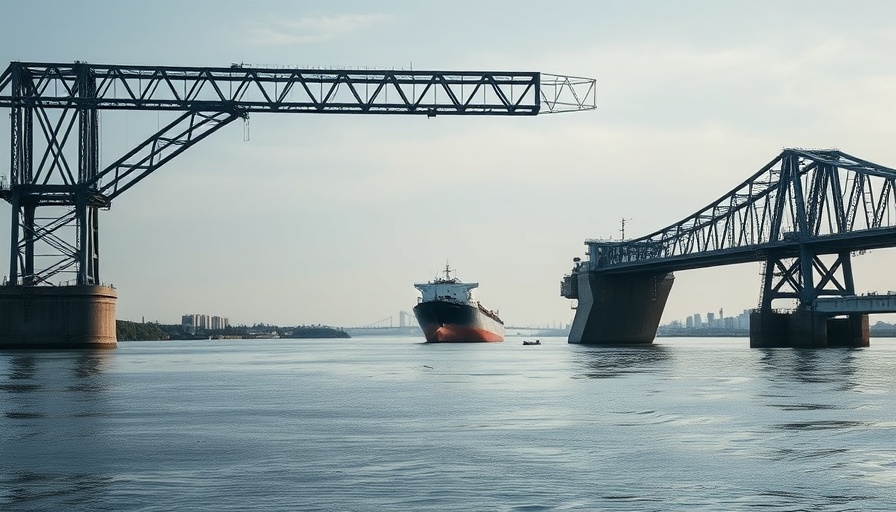
Understanding the Impact of the Key Bridge Collapse
It’s been a year since the Key Bridge collapsed, and the repercussions are still deeply felt in the communities on either side. The bridge, which served as a vital connector across Maryland's Patapsco River, was not merely a structure; it was a lifeline for commuters and businesses alike, fostering relationships in everyday exchanges. Now, as residents navigate the aftermath, they reflect on a significant change in their daily lives.
Traffic Woes and Business Struggles
The immediate aftermath of the collapse changed everything—from bustling lunch spots to reliable routes for daily commutes. “A 22 minute ride would now be over an hour,” complained restaurant owner Pete Triantafilos of Costas Inn, a beloved local institution. Customers who once flocked to his restaurant now find themselves reconsidering their dining plans due to the added inconvenience of lengthy detours.
Across various neighborhoods, the situation is equally grim. Dwan De Anda, waiting for his bus, described the beltway congestion as “like a parking lot,” a stark shift from the previous flows of traffic.
Unexpected Challenges for Local Residents
For many workers reliant on the bridge for their daily commute, the struggle continues. “Blue collar workers have been hit hard,” observed local resident Alex Shifflett. While some people in the workforce have returned to their jobs following the bridge closure, many have faced an uphill challenge.
Conversely, some have found a silver lining amid the disruption. Longshoremen, who were unemployed following the bridge's collapse, have slowly resumed work as the Port of Baltimore reopens. Dammin Johnson, a longshoreman, remarked, “Waiting is fine, as long as the ships keep rolling.”
Traffic and Retail Dynamics Post-Collapse
While some locals are evolving their routines, the increase in truck traffic through neighborhoods like Curtis Bay and Brooklyn has created new headaches. “It clogs up our main street,” lamented Meredith Chaiken, the executive director of the Greater Baybrook Alliance. With the influx of large trucks navigating local streets, retail dynamics are suffering. She’s exploring avenues to assist businesses in adapting, like enhancing online ordering systems and delivery capabilities.
Future Prospects for the Key Bridge Rebuild
The anticipated reconstruction of a new Key Bridge is estimated to take 4-5 years, prompting questions about the future for many businesses currently struggling to retain their customer base. As local organizations develop strategies to support affected restaurants, there remains hope for revitalization once a new bridge construction begins.
Emotional Reflections from the Community
The emotional toll of the loss is palpable in Dundalk and beyond. For many, it’s not just about traffic delays; it’s about connections that have been severed. The loss of community ties is as significant as the logistical challenges posed by the bridge’s collapse. As residents adjust to their new norms, they carry with them a profound sense of nostalgia mixed with hope for future reconstruction.
Conclusion: Holding Onto Hope
Despite the challenges that the communities on either side of the Key Bridge continue to face, the human spirit remains resilient. Business owners and residents alike cultivate a sense of camaraderie as they navigate an uncertain future.
While the bridge may be gone for now, lessons in community solidarity and innovation are emerging through this trying time. Together, they await the day when economic trails will reconnect and strengthen their neighborhoods once again, bolstering relationships that transcend traffic and distance.
 Add Row
Add Row  Add
Add 




Write A Comment